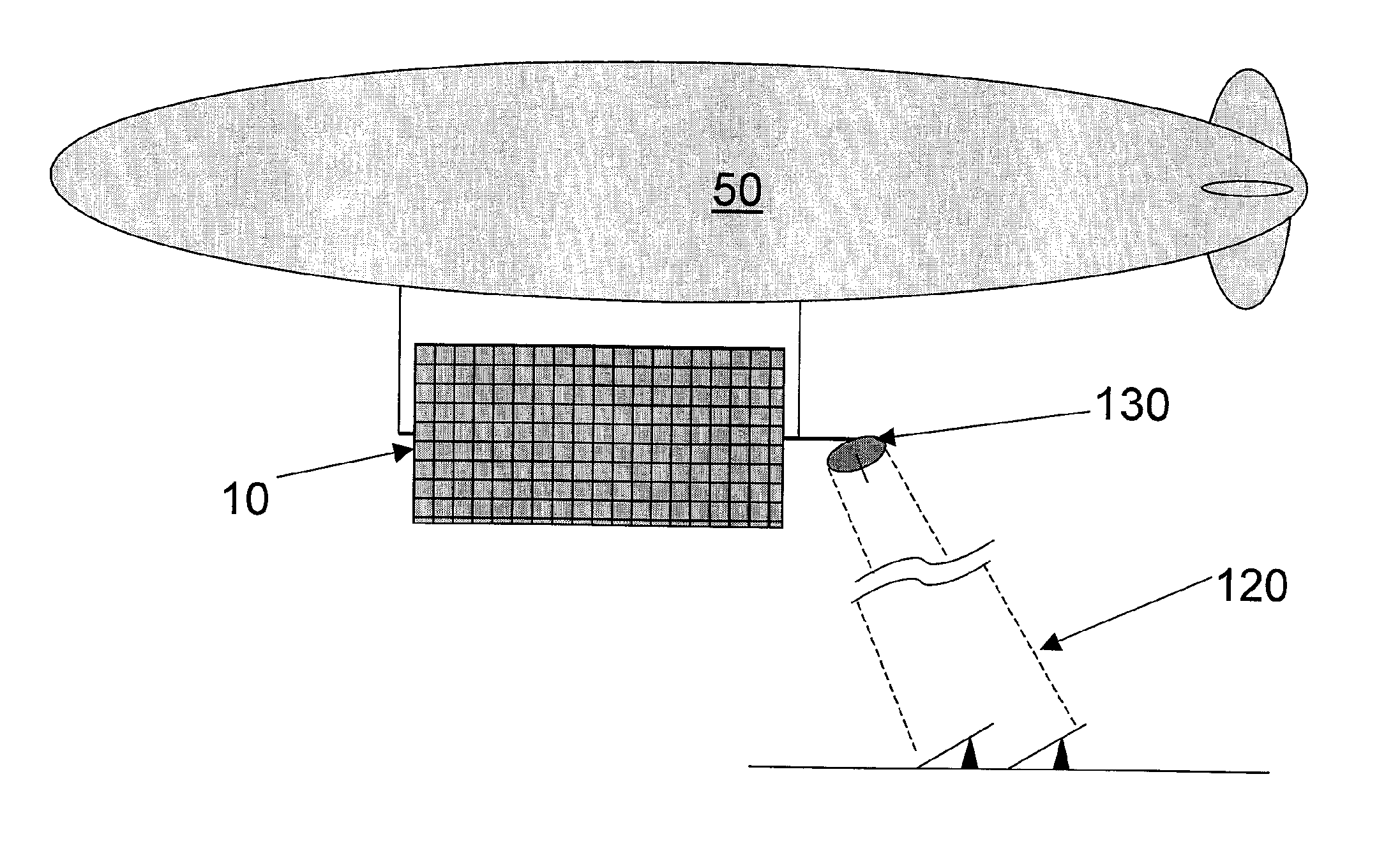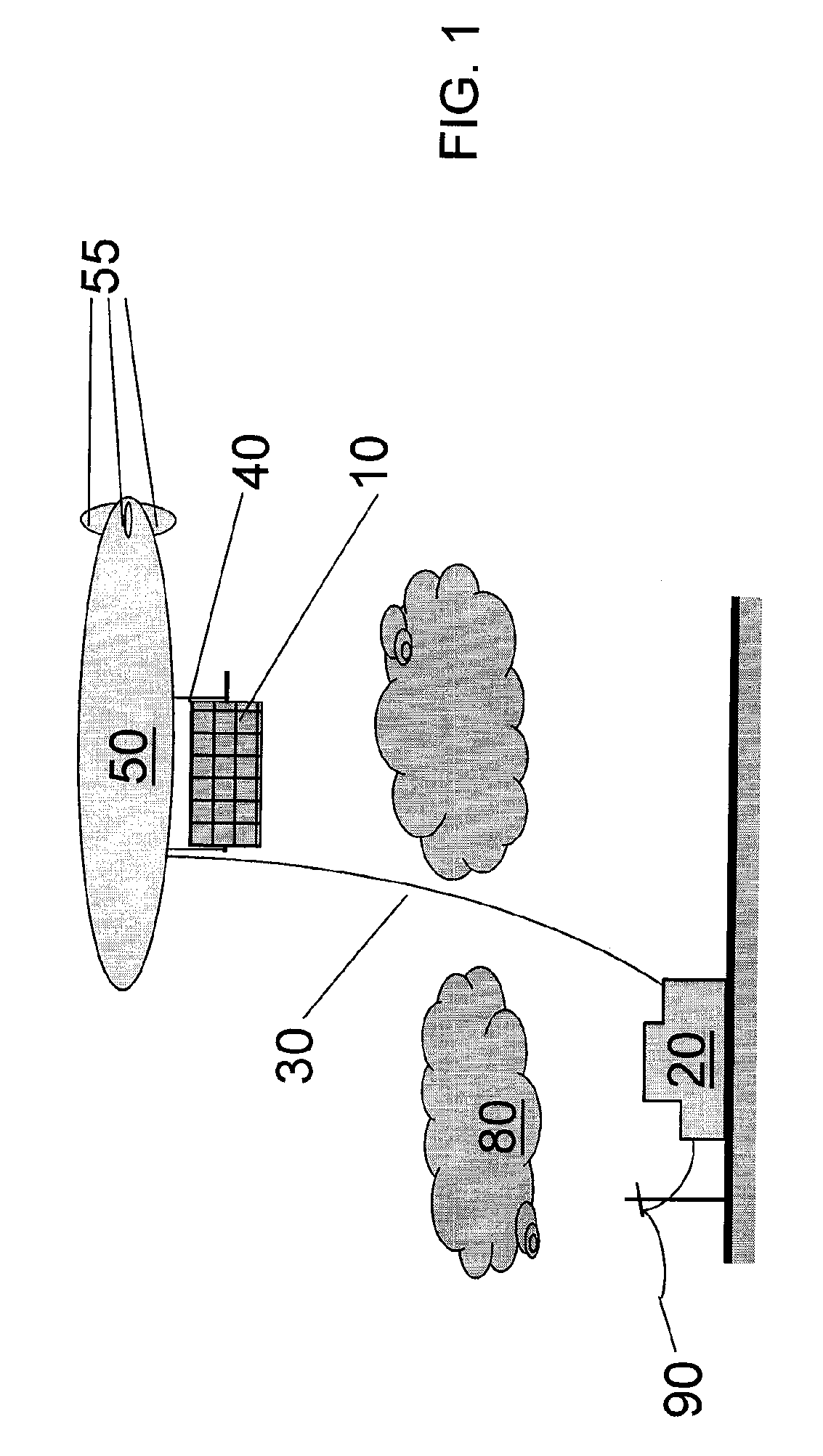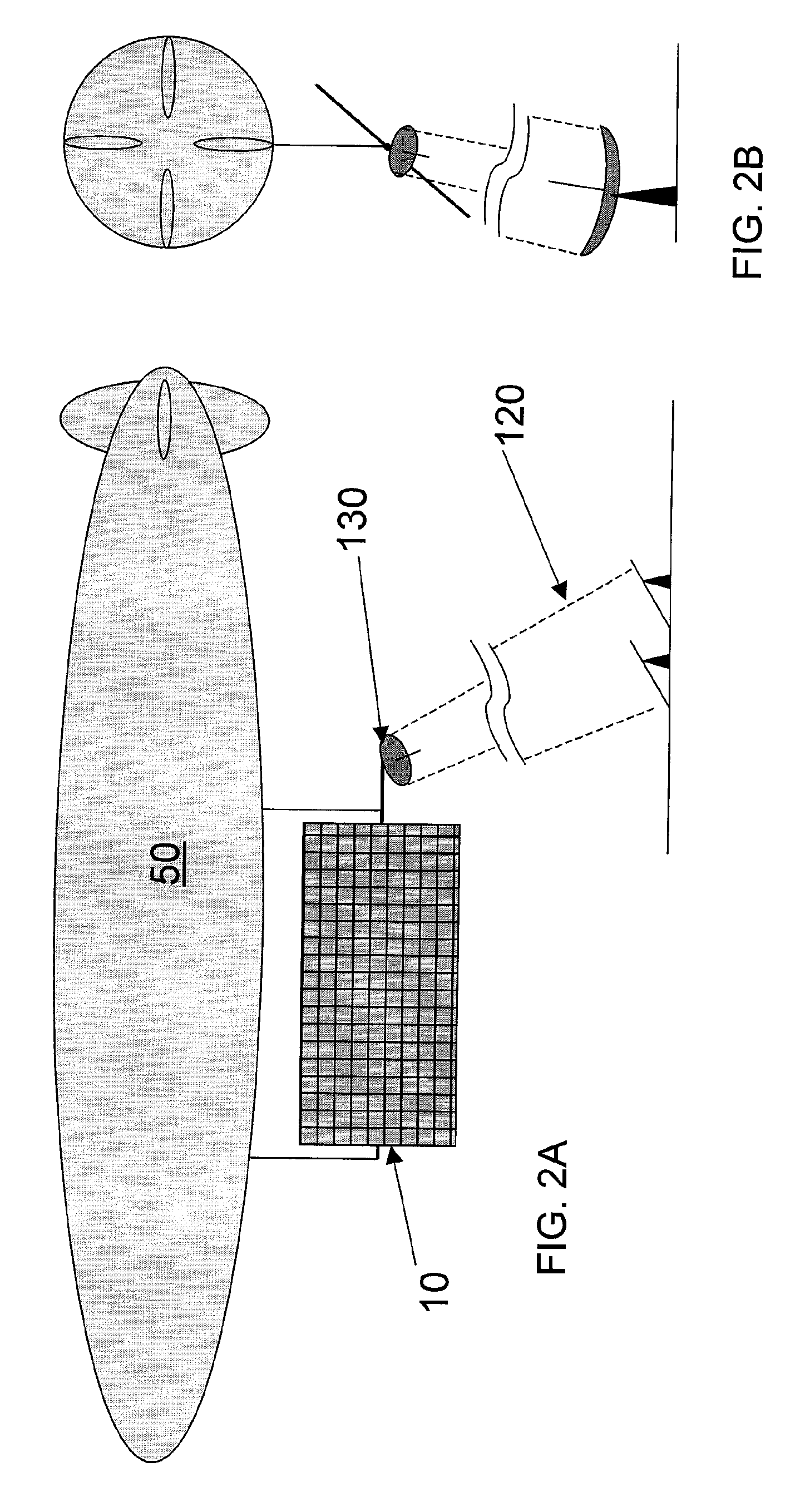Airborne power station
a solar power station and airborne technology, applied in the field of solar cell array deployment, can solve the problems of low solar energy output per square meter of solar collection area, low solar energy efficiency, and low solar energy efficiency, and achieve the effects of reducing the effect of wind current, bright sunlight, and high duty cycl
- Summary
- Abstract
- Description
- Claims
- Application Information
AI Technical Summary
Benefits of technology
Problems solved by technology
Method used
Image
Examples
Embodiment Construction
Referring to FIG. 1, in my aforesaid parent application I describe an airborne power station comprising an airborne platform 50 having a solar power generation system 10 and an electric cable 30 to transport power to the a control station 20 on the ground. The airborne platform supports the solar power generation system above the clouds 80 and other atmospheric attenuation. The control station receives the power generated at the airborne power station and distributes the power to, for example, local infrastructure 90.
The airborne platform may be an airship, including a blimp, a semi-rigid airship, or a rigid airship. As shown in FIG. 1, the airship 50 may have aerodynamic stabilizers 55 at the tail. The airborne platform preferably will include controls for the platform's yaw (steering), pitch, and / or roll. Airship embodiments may further include aerodynamic surfaces designed to produce lift when the wind blows.
The solar power generation system may be one or more photovoltaic (PV) c...
PUM
 Login to View More
Login to View More Abstract
Description
Claims
Application Information
 Login to View More
Login to View More - R&D
- Intellectual Property
- Life Sciences
- Materials
- Tech Scout
- Unparalleled Data Quality
- Higher Quality Content
- 60% Fewer Hallucinations
Browse by: Latest US Patents, China's latest patents, Technical Efficacy Thesaurus, Application Domain, Technology Topic, Popular Technical Reports.
© 2025 PatSnap. All rights reserved.Legal|Privacy policy|Modern Slavery Act Transparency Statement|Sitemap|About US| Contact US: help@patsnap.com



